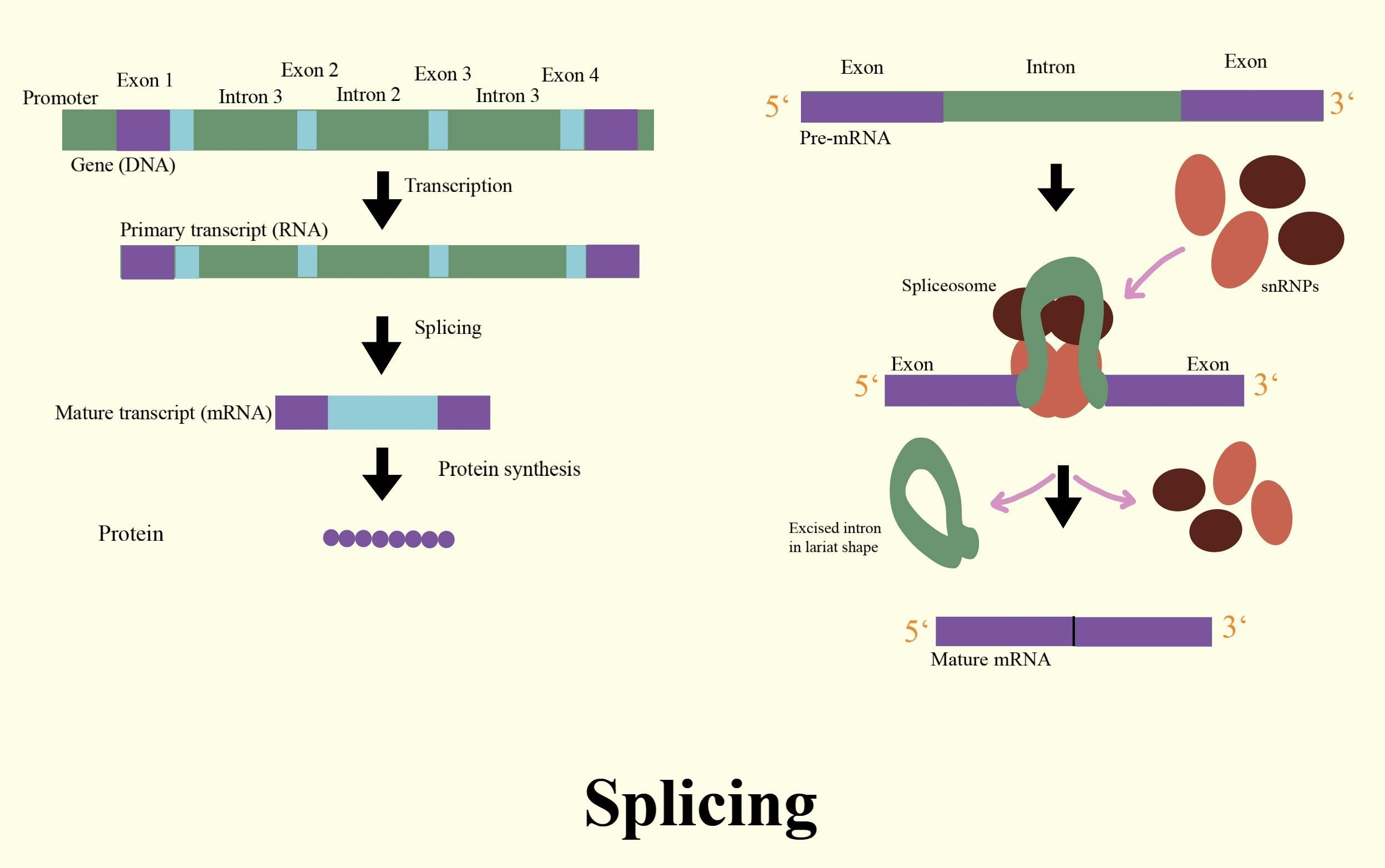
Post-transcriptional modification of mRNA in eukaryotes is called
(a) Translation
(b) Splicing
(c) Sequencing
(d) Restriction
Answer
553.2k+ views
Hint: A mechanism involving the precise identification and excision of intervening sequences from between coding regions of transcribed pre-mRNAs is the post transcriptional modification of mRNA in eukaryotes.
Complete answer:
The primary transcript (the newly made RNA molecule) is not yet considered a messenger RNA when a eukaryotic gene is transcribed in the nucleus. It's an "immature" molecule called a pre-mRNA, instead.
To become a mature mRNA molecule that can escape the nucleus and be translated, the pre-mRNA has to go through some modifications. This includes splicing, capping, and adding a poly-A tail, both of which can potentially be controlled to result in a different product (accelerated, slowed down, or altered).

Three events include post-transcriptional modification of mRNA in eukaryotes.
- Splicing: deleting introns from the primary transcript and ligating exons to create a continuous sequence that determines a functional polypeptide.
- Capping of eukaryotic mRNAs: this refers to the addition to the 5' end of almost all eukaryotic mRNAs of 7-Methylguanosine in an unusual 5', 5’-triphosphate linkage.
- Tailing- Refers to 3'end cleavage and the addition of residues of 80 to 250 A to create a poly A tail.
RNA splicing is a form of RNA processing where a newly produced transcript is transformed into a mature messenger RNA ( mRNA) from a precursor messenger RNA (pre-mRNA). Introns (non-coding regions) are separated during splicing, and exons (coding regions) are fused together.
A multimega Dalton ribonucleoprotein complex known as the spliceosome performs splicing.
So, the correct answer is, ‘(b) Splicing’.
Note: In a cell's nucleus, DNA transcription occurs. In this process, the RNA that is synthesized is then transferred to the cytoplasm of the cell where it is converted into a protein. The RNA that is synthesized during DNA transcription is ready for translation into a protein in prokaryotes. However, eukaryotic RNA from DNA transcription is not ready for translation immediately. It is thus subject to regulation.
Complete answer:
The primary transcript (the newly made RNA molecule) is not yet considered a messenger RNA when a eukaryotic gene is transcribed in the nucleus. It's an "immature" molecule called a pre-mRNA, instead.
To become a mature mRNA molecule that can escape the nucleus and be translated, the pre-mRNA has to go through some modifications. This includes splicing, capping, and adding a poly-A tail, both of which can potentially be controlled to result in a different product (accelerated, slowed down, or altered).

Three events include post-transcriptional modification of mRNA in eukaryotes.
- Splicing: deleting introns from the primary transcript and ligating exons to create a continuous sequence that determines a functional polypeptide.
- Capping of eukaryotic mRNAs: this refers to the addition to the 5' end of almost all eukaryotic mRNAs of 7-Methylguanosine in an unusual 5', 5’-triphosphate linkage.
- Tailing- Refers to 3'end cleavage and the addition of residues of 80 to 250 A to create a poly A tail.
RNA splicing is a form of RNA processing where a newly produced transcript is transformed into a mature messenger RNA ( mRNA) from a precursor messenger RNA (pre-mRNA). Introns (non-coding regions) are separated during splicing, and exons (coding regions) are fused together.
A multimega Dalton ribonucleoprotein complex known as the spliceosome performs splicing.
So, the correct answer is, ‘(b) Splicing’.
Note: In a cell's nucleus, DNA transcription occurs. In this process, the RNA that is synthesized is then transferred to the cytoplasm of the cell where it is converted into a protein. The RNA that is synthesized during DNA transcription is ready for translation into a protein in prokaryotes. However, eukaryotic RNA from DNA transcription is not ready for translation immediately. It is thus subject to regulation.
Recently Updated Pages
Master Class 12 Business Studies: Engaging Questions & Answers for Success

Master Class 12 Economics: Engaging Questions & Answers for Success

Master Class 12 English: Engaging Questions & Answers for Success

Master Class 12 Maths: Engaging Questions & Answers for Success

Master Class 12 Social Science: Engaging Questions & Answers for Success

Master Class 12 Chemistry: Engaging Questions & Answers for Success

Trending doubts
What is meant by exothermic and endothermic reactions class 11 chemistry CBSE

Which animal has three hearts class 11 biology CBSE

10 examples of friction in our daily life

One Metric ton is equal to kg A 10000 B 1000 C 100 class 11 physics CBSE

1 Quintal is equal to a 110 kg b 10 kg c 100kg d 1000 class 11 physics CBSE

Difference Between Prokaryotic Cells and Eukaryotic Cells




